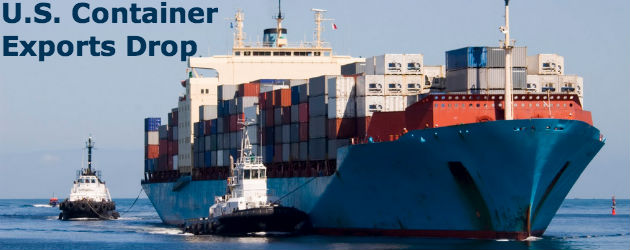Container Exports at Lowest Point in Four Years; Imports Slow
 In what may suggest a worrying economic signal, the month of November saw U.S. ocean container exports hit their lowest point since January 2010, when the Cass Freight Index began tracking.
In what may suggest a worrying economic signal, the month of November saw U.S. ocean container exports hit their lowest point since January 2010, when the Cass Freight Index began tracking.
According to Cass, the November export index registered .934, compared to our baseline of 1.0 in January 2010.This is only the second time that the export index has fallen below 1.0. Imports were stronger than in two of the previous three years, but dropped 6.1 percent from October to November, a period where we have typically seen increases.
Noted Cass, the strong economic growth measured by a 3.1 percent rise in GDP in the third quarter has not continued into the fourth quarter, during which it is estimated to grow by only about 1.8 percent. The high inventory levels that pushed GDP up in the third quarter led to imports falling for the last three months as businesses try to reign in surging inventories in the face of weaker‐than‐expected sales. Strong exports also bolstered third quarter GDP, but fourth quarter export levels are falling well behind.
Container Exports
A larger‐than‐normal decline from October to November of 15.0 percent puts the ocean freight export index at its lowest level this year. It follows a 7.3 percent increase in October. November 2013 container exports were 15.2 percent lower than the same month a year ago. Interestingly, volumes declined almost across the board for the 25 destination countries included in the export index.
Matching Cass data, many of the nation’s ports are reporting drops in the number of containers handled. Production of automotive and related products slowed in November because of falling domestic and foreign demand, which in turn reduced shipments of parts and finished goods.
Potential Headwinds Ahead
Good economic news has filled the headlines this month, ranging from a surge in manufacturing, to improved new home sales, to a dramatic improvement in unemployment. But there are many headwinds yet to overcome says Cass.
First, are these improvements sustainable? The growth in new orders, especially new export orders, as well as a growing order backlog, indicate that the manufacturing sector is regaining steam after sputtering for several months.
But while the job increases over the last two months is welcome news, the employment participation rate remains near the lowest level in 30 years. And the good news in new home sales and record stock prices benefits primarily the upper class. The middle class, who has the power to continue to lift us out of the recession, or to leave us where we are, has seen its net worth recover very slowly and its income growth stagnate.
With consumer confidence down for the second month in a row, it does not seem likely that we are poised for sustained strong growth, but rather more of the same – recurring cycles of strengthening followed by lulls, coming out a little bit ahead at the end of each turn.
Category: Featured, General Update










